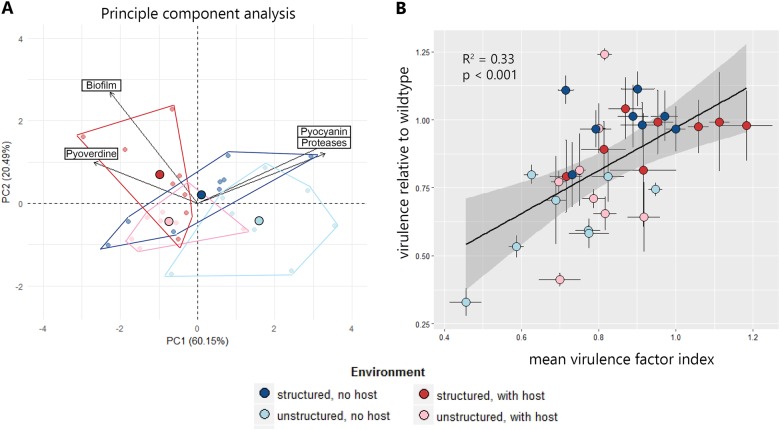Fig. 3.
The aggregate change in virulence factor production explains virulence evolution. a A principal component analysis (PCA) on the population level changes in the production of four virulence factors (pyoverdine, pyocyanin, proteases, biofilm) reveals divergent evolutionary patterns. For instance, analysis of the first two principal components (explaining 80.6 % of the total variance) shows complete segregation between populations evolved in unstructured host-free environments and structured environments with the host. Moreover, the PCA reveals that evolutionary change was aligned for some traits (aligned vectors for pyocyanin and proteases), but opposed for others (inversed vectors for pyoverdine versus pyocyanin/proteases). Small and large symbols depict individual population values and average values per environment, respectively. Polygons show the boundaries in phenotype space for each environment. b We found that the aggregate change in the production of all four virulence factors explained the evolution of virulence. To account for the aligned and opposing effects revealed by the PCA, we defined the “virulence factor index” as the average change in virulence factor production across all four traits, scaled relative to the ancestral wildtype. Symbols and error bars depict mean values per population and standard errors of the mean, respectively

